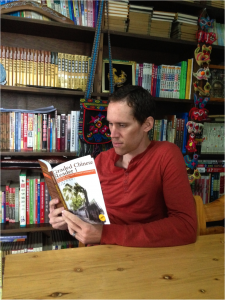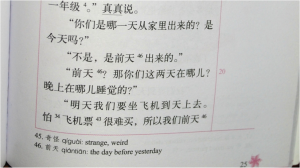I Can Read Chinese, So Can You
Today’s guest blogger, Peter Gokey, is learning Chinese in China at Keats School. In this article, he shares his own learning experience in Chinese, with a particular focus on learning to read the language. If you’re a student or speaker of Mandarin and have any suggestions to add, please do so in the comments below.
There are two aspects of Chinese that people from western countries find intimidating. The first aspect is the system of tones where the pitch of your voice can be the only difference between two or more words. The second is the writing system, called Hanzi. In order to speak, learners of Chinese must tackle the tones; however, since the barrier to reading and writing seems so high, many language learners delay studying Hanzi or never study it. This is often a reaction to one teaching method that emphasizes reading and writing at the cost of speaking. I think that either extreme is a mistake. Reading reinforces oral vocabulary and grammatical structures. Keats School finds a good balance by focusing on speaking and listening but also encouraging students to recognize the Hanzi for their new vocabulary words.
Finding materials suitable for a beginner-level Chinese language learner, can be a difficult and discouraging task. Early on, my wife and I purchased a book of very short stories designed for Chinese children who are learning to read Hanzi. One year later this book is still beyond our level, but Hanzi is only the secondary reason this book is too difficult. The primary reason is that Chinese children learning Hanzi and those foreigners who learn Chinese in China have different needs. By the time Chinese children begin learning to read Hanzi they are already fluent in spoken Chinese. So a book aimed at children can use thousands of words as long as the pinyin (the phonetic system for writing Chinese using the Roman alphabet) is included above each character. Second language learners, on the other hand, are not yet fluent. They are learning both how Chinese words are pronounced and how they are written at the same time. Therefore, second language learners like us need materials specifically designed for second language learners.
And the good news is that there are such materials. After learning to recognize about 300 Hanzi, I began reading the beginner-level books in a series called Chinese Breeze (15元 each). Each book is a short but interesting fictional story. In this series there is a love story, a murder mystery, and even a couple of traditional Chinese tales. So far this series consists of 16 books in three reading levels (300, 500, and 750 word levels). When complete, the Chinese Breeze series will include 80 titles divided between eight reading levels.
There are a few features about these books that I really like. First, pinyin only appears in footnotes defining select new words. I find it very distracting to practice reading Hanzi with the Pinyin right above it. Second, at the back of the book there are comprehension questions for each chapter and an activity that tests your understanding of the whole story. Finally, each book includes a CD with MP3 recordings of the entire story read by a native speaker at two different speeds.
Having read all the books at the 750 word level, I am now trying books from two other series. The first is a collection of short stories titled Graded Chinese Reader (three books in this series) and the second is a collection of very short essays called Read It Now (there are many books in this series at several reading levels). Both of these books also include CDs.
All of these books are available at Mandarin Books 漫林书苑 on Wenhua Xiang 文化巷 in Kunming.
Thanks Peter! If you’re learning Mandarin, we hope these suggestions are helpful for getting started on reading. Alongside these, you can use EuroTalk’s programs to begin speaking and listening. Good luck!



